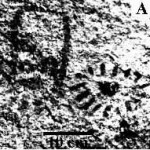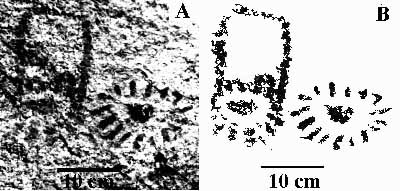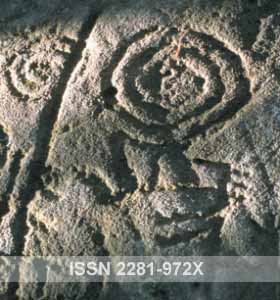 TRACCE no. 9 – by R. Mariano G. Castelo Branco
TRACCE no. 9 – by R. Mariano G. Castelo Branco
2nd International Congress of Rupestrian Archaeology
2-5 October 1997 DARFO BOARIO TERME
Computer techniques applied to Rock Art in NE Brasil.
This paper has as main objective to show the use of some computer techniques applied to digital photographs in the study of rock painting in the region of Forquilha, NE Brazil, Ceará State
The “Lagoa das Pedras-Forquilha” archaeological site
The investigations with photographs in the rupestrian studies begun long time ago. Frequently several difficulties as well as traditional techniques surrounded them. This paper has as main objective to show the use of some computer techniques applied to digital photographs in the study of rock painting in the region of Forquilha, NE Brazil, Ceará State.
This study also accomplishes a digital data base generation of all petroglyphs and simultaneously, the archaeological preservation since private enterprise of granite exploration, human activities and natural erosion have damaged numerous informations of Paleolithic art. We have employed some computer procedures to improve and to emphasize the painting quality but always maintaining the original position and details of pigments above the support rock.

The techniques that we have applied includes numerous filters (equalization, brightness and contrast, color balance, hue, intensity, saturation, threshold), some inversions of original data type (16 million of colors, black and white, grayscale, optimized indexed color, RGB, CMYK) and the automatic traces obtainment. Nevertheless in all of the automatic optimization process the possibility to find a painting pigment (red) similar to rock pigment (rose to red regional granites) in the pixel domain is so important and depends of others conditions.In all automatic image treatment programs that we have the opportunity to process the rock paintings of this region show problems of pigments interactions between rock support colors and the painting colors were present in the results. If the rock painting are few contrasted the results can be serious damaged. All attention is need and is essential to be careful. In this Forquilha specific situation we have adopted an algorithm that allows to select portions of an image based on the color similarities of adjacent pixels. This attribute can be useful for selecting part of an image where adjacent pixels within the tolerance and color similarity range accepted were selected.Often the achievement of this procedure is not yet entirely automatic because it need frequently detailed observations of the result appearance compared with changes in the magnification of the active image. The figure A is a B/W example of an 16 million of colors painting of this region that was submitted to numerous filters and figure B show the result of the technique adopted here.
R. Mariano G. Castelo Branco
Geophysical Laboratory-DEGEO
Federal University of Ceará
Brazil
TRACCE no. ![]() special issue for RA Congress 1997
special issue for RA Congress 1997
![]()














Leave a Reply